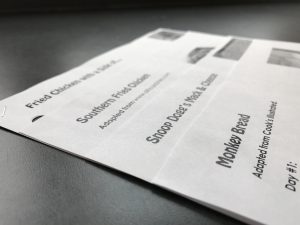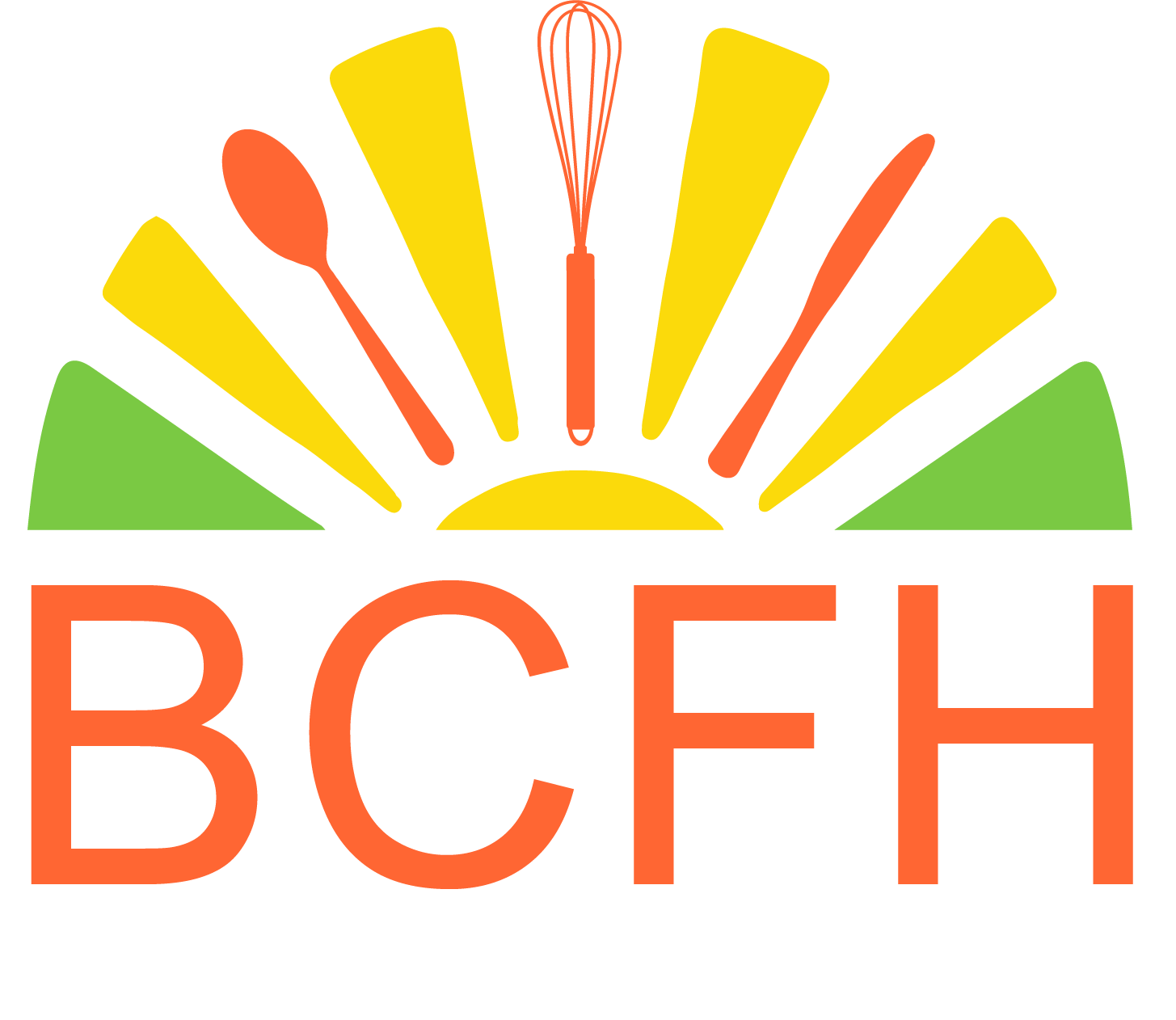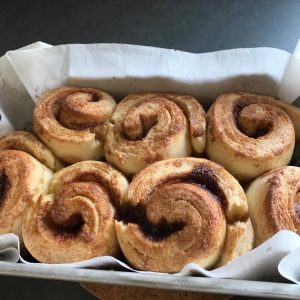Decolonizing the Foods Lab: Is Monkey Bread[1] a Racist Term?
Guest Blog by Madeline Wong, Home Economics Teacher, Surrey School District
My students were not alone in asking the question, “Why is M***** Bread called M***** Bread?”.

With two new Food Studies 12 classes for Semester 2, we were just in time to celebrate Black History Month. [2] My interest to celebrate our diversity in the home economics curriculum originates from my personal experiences. I was born and raised in Vancouver by Chinese immigrant parents during a time where assimilating into the Canadian culture was expected.
I did not see myself or my peers who also belonged to the BIPOC community being represented in our learning materials and curriculum in a non-tokenism manner.
Therefore, in Food Studies 10, my curriculum explores recipes in its most traditional form so that students appreciate all that encompasses the recipes to avoid the “tourist approach”. In Food Studies 11, my students learn to understand why traditional recipes are modified when introduced to a different audience. In Food Studies 12, students are encouraged to create recipes by applying their personal experiences, knowledge, skills and techniques. We were ready for Black History Month!
I have involved my students with selecting recipes for the foods studies courses for a number of years. My intention has always been to maintain my students’ engagement. My students eagerly suggested that we make Macaroni and Cheese, Fried Chicken, Cinnamon Buns, Cajun Chicken Burger, and the Supreme Crunch Wrap. It was funny how both classes had brainstormed a similar list of recipes. Initially, I was going to substitute the Macaroni and cheese because it was introduced in Food Studies 9. However, I decided to keep the Macaroni and Cheese because I had just made the connection with de Zwart’s (2005) White Sauce metaphor, which referred to preserving colonial ideals in early Home Economics Education that can still be seen in today’s curriculum. I do not understand why it has taken me almost a decade after reading the article to make that connection.
We were excited to first make our Cinnamon Buns, which was a two-day lab. I gave my students M***** Bread as a second option to the yeast bread recipe. Immediately I was asked, “How do you make M***** Bread?”
I responded with, “You’ll need to roll the dough into spheres, dip into melted butter, roll in the cinnamon sugar mixture and layer coated spheres in a loaf pan.”
“But why is M***** Bread called M***** Bread?” my students asked me.
What a great inquiry question after we had finished making the dough.
“How do we find out why it is named M***** Bread?” I ask my students.
My Grade 12 students knew the routine because we had always looked into the origin of various recipes since Grade 8. My students proceeded to take out their devices to look for possible answers online while waiting to be dismissed from class.
“Ms. Wong! It says here on Wikipedia that M***** Bread originated from Hungary”, said Student A.
“It [Wikipedia] also says that you would pick the bread pieces like how a monkey would” added Student B.
Student C pointed out, “The name for monkey bread doesn’t have a clear origin”.
“It’s also called bubble bread, bubble loaf, jumble bread, pull-apart bread, pinch-me cake, pluck-it cake, monkey puzzle bread, monkey brains, and monkey bread on Tori Avey!” shouted Student D.
“There are different websites for M***** Bread recipes though,” said Student E.
I looked at my student’s cellphone and we saw some websites had reference to “Southern-style” recipes. My student and I looked at each other wide-eyed.
“Well, what did you guys find?” asked the class. My student and I looked at each other again and then looked at the rest of the class. The rest of my students gasped, “Ms. Wong! What were you thinking to have us making M***** Bread?”
“Time for more research!” I had always encouraged my students.
Coincidently, it was time to dismiss my students. I had encouraged my students to continue researching about why M***** Bread is called M***** Bread and to report back the next class.
My students were quick to realize there was a racial connotation behind M***** Bread because we had started the unit with a series of articles. First, we read and analyzed Long’s article that discussed culinary appropriation and appreciation. What is considered to be culinary appropriation? How do we show culinary appreciation? What are your thoughts on fusion foods? My students were conflicted when I asked, “Is Butter Chicken Pizza a culinary appropriation or culinary appreciation?”. According to Long (n.d.),
What everyone should always consider is that food is a part of people’s identities and should be treated with respect. You don’t have to love a dish, but you also don’t need to disrespect it along with the culture it belongs to. You can and should add your own twist to a dish, but recognize its differences from the traditional version. You can definitely recreate other people’s cultural recipes, but don’t claim it as your own for money. Don’t appropriate food, appreciate it.
We had a great discussion of different fried chicken recipes because that was one of their choice recipes. My students decided to stay with our theme and selected a Southern-style fried chicken recipe.
Next, we examined why “Aunt Jemima” and “Uncle Ben” deserved to retire (Twitty, 2020) in order to gain a better understanding of how African Americans came to the United States and what their lifestyle and conditions were. Some students had thought Aunt Jemima and Uncle Ben were a power couple and so it was important for me that my students learned more. My students were shocked when we learned that they perpetuated the White community’s idea of Blacks enjoyed being subservient. My students appreciated the lesson and were deeply saddened at the same time.
After this disturbing discovery, we then explored what Soul Food is with Miller (2015) and how Soul Food has evolved since Grandma’s original recipes. My students also learned that all Soul Food is Southern-style food, but majority of Southern-style food is not Soul Food (Peartree & Lalomia, 2022).
The idea of M***** Bread with a racial connotation had not left my brain. I continued to conduct an online search to see if there were any racial implications. I had come across a transcript, Is Monkey Bread a Racist Term (Barton, 2021), but unfortunately, I was not able to comprehend it because the transcription had included misspelled words and words that did not appear to be from the original dialogue. According to Richie1982’s (2010) contribution to Urban Dictionary, M***** Bread referred to “a term from the South to describe how a once flat girl grew a phat ass and tits so quickly”. In a forum Levity (2007) mentioned in a thread that a clerk pointed out to someone that, “we never called it monkey bread, we’ve always called it ****** bread”. Layne (2019) introduces first lady Nancy Reagan’s favourite holiday recipe with “Whatever the hell ‘monkey bread’ might be – something racist, we assume…”. The information that was found alluded to M***** Bread having a racial undertone.
Perhaps I had to look from a historical perspective too. According Avey (2022), the term may have originated from “someone combining a 1940s Southern slang for snack food, ‘monkey food’, with a traditional jumble bread”. I could not find another source that would explain the entirety of “monkey food”, but something was not sitting well with me. My search on jumble loaf resulted in images and pictures of cinnamon and raisin jumble loaves and cinnamon and chocolate jumble loaves. Collister (n.d.) describes jumble loaf as “sweet raisin dough is rolled up with brown sugar and cinnamon, then cut up and put into a loaf tin in a jumble.” I was able to draw similarities between m***** bread and jumble loaf.
One of my Black students had walked up behind me while I was conducting my research.
“Ms. Wong! What are you looking at?” she asked.
I asked her opinion on M***** Bread.
“Ms. Wong. M***** is often used as a derogatory term against Black people! There’s something wrong with M***** Bread.”
“I know. I apologize for not thinking this through” I said to her. I remembered H&M’s sweatshirt advertisement controversy (West, 2018).
She continued, “This is why we need more Black teachers. We are under-represented.” I could not have agreed with her more.
I proceeded to connect with a teaching colleague to express my concern about my inability to find information about racial inferences behind M***** Bread. Her response was impactful,
“If your research shows that there probably isn’t a racist origin to the name of the recipe, then I assume that there isn’t. But, if the name makes you feel uncomfortable, and wonder if there is a racist implication, then maybe it’s a sign not to use it. If it makes you feel this way, imagine how your Black students would feel” (D. Nembhard, personal communication, Feb 17, 2022).
I had shared this response with my student and I asked her, “Shall we abandon the recipe?”
She said, “Can we call it something else instead?”
I also found that to be tricky. Regardless whether we decide to rename M***** Bread or not, it is still what it is and what it represented. As Smith (2017) noted, “Changing the name doesn’t guarantee anything especially if there is no change in professional practice”. The students would need to know why M***** Bread is controversial or any other terminologies because “language defines” (Smith, 2017).
“What would you call it?” I asked my student.
“I don’t know yet.” she said.
On the second day of our lab some of my students had asked me if they were able to continue to make cinnamon buns. I asked my students to give me a reason because I wanted to know.
“We don’t feel comfortable making M***** Bread because we’re afraid what the term might refer to.”
I agreed with their decision and I was impressed with their actions. The remainder of the class made M***** Bread because they were curious about what it was supposed to be. When my students completed their lab, we briefed one another on the information that we were able to or unable to find. I asked my students, “If we were to change the name, what would we call it?” just as Student F from another class walked into the lab and he responded, ‘CinnaBubbles!” For sure this sounded more interesting than Cinnamon Sugar Pull-Apart Bread.
My students’ cinnamon buns and CinnaBubbles turned out great, but most importantly we have learned to trust our gut instincts and to not be afraid of finding the truth. My students know that we learn from one another and together because I am not all knowing even though I am their teacher. What had appeared to be a harmless recipe had turned out to become a great inquiry for my students and me, one we will always remember.
Finally, who thought plucking pieces of bread like a monkey would be a great inspiration for a recipe name? No one I had spoken to found that appealing.
References
Avey, T. (2022). American cakes – monkey bread. https://toriavey.com/toris-kitchen/american-cakes-monkey-bread/
Collister, L. (n.d.). Cinnamon & Raisin Jumble Loaf. https://thehappyfoodie.co.uk/recipes/cinnamon-and-raisin-jumble-loaf/
de Zwart, M.L. (2005). White sauce or Chinese chews: Recipes as postcolonial metaphors. In S. Carter, P. Roome, C. Smith & L. Erickson (Eds.). Unsettled Pasts: Reconceiving the West as Women’s History, (pp. 129-147). Calgary: University of Calgary Press.
Layne, K. (2019). Nancy Reagan’s making her famous Thanksgiving Monkey Bread in hell. https://www.wonkette.com/nancy-reagans-making-her-famous-thanksgiving-monkey-bread-in-hell-or-not
Long, K. (n.d.). The fine line between culinary appropriation and appreciation. https://spoonuniversity.com/lifestyle/the-fine-line-between-culinary-appropriation-and-appreciation
Miller, A. (2015). An illustrated history of Soul Food. https://firstwefeast.com/eat/2015/08/an-illustrated-history-of-soul-food
Monkey Bread. (2020, February 9) In Wikipedia. https://en.wikipedia.org/wiki/Monkey_bread
Peartree, M. & Lalomia, F. (2022). Everything you need to know about Soul Food, according to Chef Millie Peartree. https://www.delish.com/food-news/a26356466/what-is-soul-food/#:~:text=While%20not%20all%20Southern%20food,in%20the%20Southern%20United%20States.
Richie182. (2010). Monkey Bread. https://www.urbandictionary.com/define.php?term=monkey%20bread
Smith, M. G. (2017). How language writes us: A retrospective. Proceedings of the Canadian Symposium XIII. Issues and Directions for Home Economics/Family Studies Education, London, ON. https://www.ca-symposium.com/
Twitty, M. (2020). Aunt Jemima and Uncle Ben deserve retirement. They’re racist myths of happy Black servitude. https://www.nbcnews.com/think/opinion/aunt-jemima-uncle-ben-deserve-retirement-they-re-racist-myths-ncna1231623
West, S. (2018) H&M faced backlash over its ‘monkey’ sweatshirt ad. It isn’t the company’s only controversy. https://www.washingtonpost.com/news/arts-and-entertainment/wp/2018/01/19/hm-faced-backlash-over-its-monkey-sweatshirt-ad-it-isnt-the-companys-only-controversy/
For no paywall, see:
https://www.nytimes.com/2018/01/08/business/hm-monkey.html
Footnotes:
[1] Monkey Bread will be denoted as M***** Bread because of racial connotations behind the term.
[2] I had attended the Teachers of Home Economics Association Conference and Canadian Symposium with Mary Leah de Zwart, Amy Dash, Ravi Gill and Gale Smith who presented on Decolonization and Antiracism in Home Economics Education and the Surrey Teacher Association Convention with Adilah Abdirahman who presented on the K-12 Challenging the Discomfort: Anti-Racism in Education.





A very interesting bit of research and connecting of dots (and asterisks!). As someone who grew up having something that was not called a mandarin in the toe of my Christmas stocking and enjoying things that were not called Brazil nuts, I find it very interesting how seemingly innocuous traces of racism can linger in the strangest places.
Thank you for your comment. It’s an important realization and connection we can all make and change our own language.
Hi Mary Leah,
This is an interesting read. After reading your post, I did a very quick search and noted the following:
The Wikipedia entry says:
The origin of the term “monkey bread” comes from the pastry being a finger food; the consumer would pick apart the bread as a monkey would.[2]
Following the linked citation [2], the section “How did monkey bread get its name?” provides four credible explanations from food historians: None of them suggest any racial connotations and seem to support the definition above: https://www.foodtimeline.org/foodbreads.html#monkeybread
It seems odd that you would not mention this as it is likely the first result returned in a search related to “monkey bread name origin” or a similar search.
You wrote: “I could not find another source that would explain the entirety of “monkey food’”
How about this piece by “internationally recognized culinary authority, Kristina Vanni”? https://www.thespruceeats.com/how-to-make-monkey-bread-4693175
This piece also points to the innocuous nature of the name that corresponds to the definitions above: “Monkey bread is also known as pull-apart bread, bubble bread, or even pinch-me cake…. It is traditionally served warm from the oven so that the individual pieces can be easily torn away with the fingers and eaten by hand.”
Avey (2022) is arguably the most authoritative source you listed, yet it makes no mention of the term being racist.
If you search for “monkey bread name origin”, or something similar, the results above are the first ones returned. In contrast, if you search for “Is monkey bread racist?” you will certainly find allusions to this (anonymous forum posts, asides, and anecdotes) but that is only because of the nature of the question you asked.
Ironically, if you now search for “is monkey bread racist?” this blog post is what comes up first, lending credence to an argument that is built on a very shaky foundation.
If you have a moment to reply, I would love to know:
Do you recall what terms you searched for when you were looking into this?
It might have been the students in the Foods 12 class who did the searching.
Hi Mary Leah,
I realize that I addressed my comment to you rather than Madeline but I thought it best as you replied to Ken’s post.
To be clear, I agree that the piece addresses an important issue (i..e racism that is hidden/embedded in language associated with food) but the example used was poorly chosen.
Cheers,
Kieran